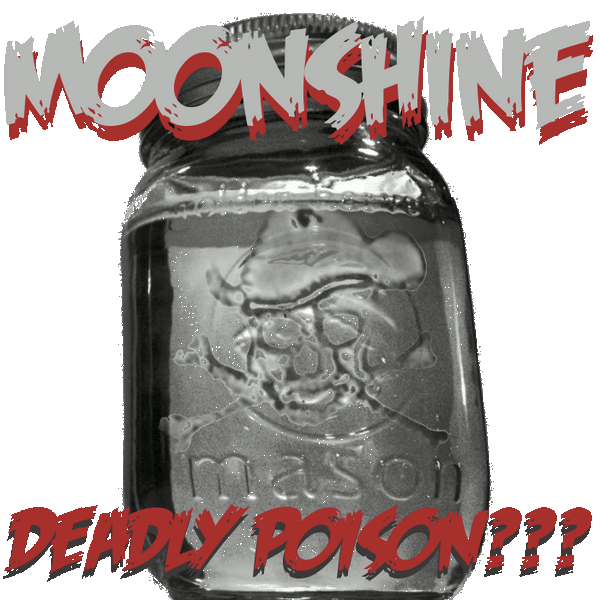Moonshine and Blindness

Before we get move on, a reminder: Distilling alcohol is illegal without a federal fuel alcohol or distilled spirit plant permit as well as relevant state permits. Our distillation equipment is designed for legal uses only and the information in this article is for educational purposes only. Please read our complete legal summary for more information on the legalities of distillation.
Methanol Toxicity
Methyl alcohol (methanol) is the bad stuff that could be found in moonshine (or any distilled spirit for that matter). Pure methanol is very dangerous and it is definitely able to cause blindness and even kill people. As little as 10 ml of pure methanol could blind someone and as little as 30 ml could kill someone. 30 milliliters is equivalent to the amount of liquid in a standard shot glass.
How is Methanol Produced?
Methanol is found naturally in certain fruits and vegetables. It may also be produced as an unintended byproduct during the fermentation process. Spirits distilled from fruits, such as apples, oranges, and grapes, are more likely to contain methanol. Both beer and wine generally contain methanol. Studies have determined that wine can contain as much as 329 mg/L and beer may contain somewhere on the order of 16 mg/L. This makes distilled wine (grappa, brandy, etc.) potentially more dangerous than all grain shine - such as corn whiskey.
Why is Methanol A Concern for Distillers?
If wine contains methanol but doesn't pose a risk of methanol poisoning then why is it potentially dangerous to drink once distilled? The difference is that the methanol concentration in, say, 5 gallons of wine, is evenly distributed among the 5 gallons. For someone to ingest a potentially dangerous amount they would need to ingest more than 5 gallons....or 28 bottles!
During the distillation process methanol is concentrated at the start of the production run because it has a lower boiling point than ethanol and water. The boiling point of methanol is approximately 148 degrees farenheit, which is quite a bit lower than ethanol (the good stuff). This means that methanol (148F boiling temp) will start to boil before the ethanol (174F boiling temp). This is why commercial distillers always throw out the first bit of shine they produce from each production run (more on this below).
Here are a few examples of the dangers of methanol:
- If 5 gallons of wine containing the abovementioned concentration of methanol (329mg/L) were distilled, there could be as much as 8 mL of methyl alcohol in the first jar - a potentially dangerous amount.
- Scale this up to a 100 gallon batch, distilled all at the same time in a large still, and a commercial distiller could potentially have a very big problem if the methanol was not discarded. Distilling 100 gallons of wine containing 329 mg/L of methanol could result in the concentration of 40ml of methanol, which could be fatal if someone drank it all at once.
How to Remove Methanol from Moonshine
One way a commercial distiller would determine the presence of methanol is to monitor still temperature. If anything is produced by the still before wash temperature reaches 174 degrees, it's methanol. A commercial distiller will discard it. Again, methanol boils at a lower temperature than ethanol and will concentrate at the beginning of distillation runs. Additionally, commercial distillers have determined that simply discarding a standard amount per batch, based on batch size, is enough to keep things safe. The rule of thumb is to discard 1/3 of a pint jar for every 5 gallons of wash being distilled.
How much initial product to discard:
- 1 gallon batch - discard the first 2/3 of a shot glass
- 5 gallon batch - discard the first 1/3 of a pint jar
- 10 gallon batch - discard the first 3/4 of a pint jar
Regardless of still temp, it's a good idea to always follow this rule of thumb. Methanol or not, the first stuff to come off the still tastes and smells like rubbing alcohol. It's by far the worst stuff in the entire production run and it isn't going to impress anyone. A commercial distiller would never drink or sell the first stuff produced by a still. Checkout our article "Making Moonshine - The Dummies' Guide" for more information on this topic.
Thanks for reading! For more safety tips, check out the 10 most important safety tips for distillers.





Leave a comment